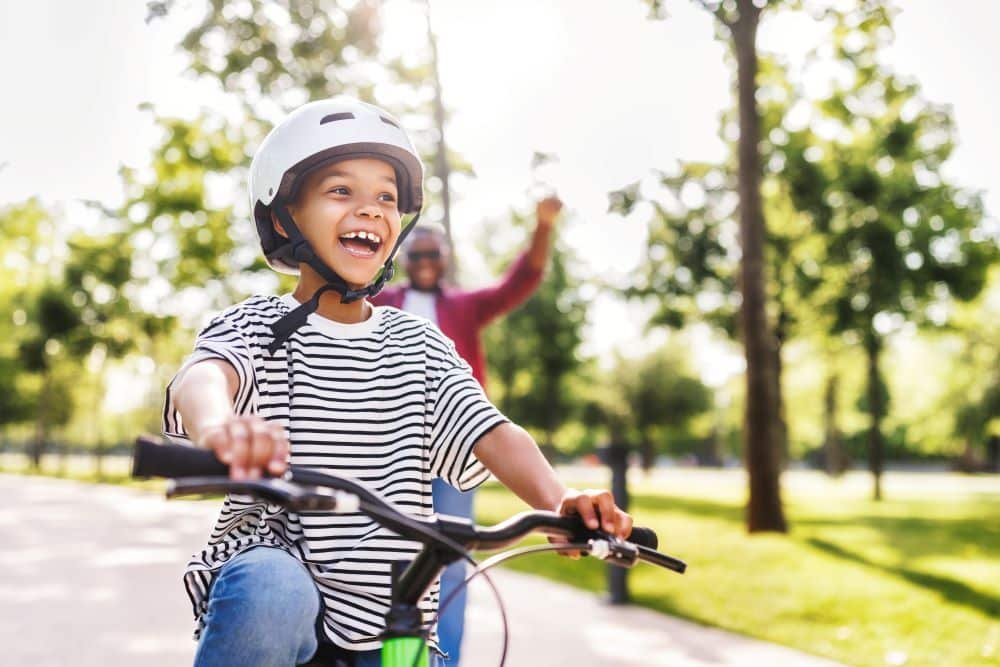Mountain biking opens up a world of adventure and thrill for kids. Cruising over dirt trails and obstacle courses on a burly bike gives a sense of independence and accomplishment. However, certain etiquette rules should be followed on the trails to ensure safety and avoid conflicts with other cyclists.
Use Voice or Bell Warnings
Do not assume other trail users hear you coming, especially around corners with limited visibility. Use your voice to announce yourself loudly in advance. Say something like “Passing on your left” so they know you are approaching. A bike bell can also be used to warn others of your presence. The key is giving plenty of audible notice, so fellow riders are not startled by your sudden appearance.
Pass With Care
When passing another cyclist on the trail, always alert them audibly and do so slowly and cautiously. Pass wider riders on their left side. Only pass on the right if the trail is wide enough to do so safely. Leave plenty of space so your respective bikes do not collide. Wait for the rider ahead to indicate it’s okay to pass before pulling around them. Rushing through narrow passing zones can cause crashes.
Stay In Control
It can be thrilling to bomb down mountain bike trails at top speed on a lightweight mountain bike for kids. However, the people at Woom Bikes recommend riding within your ability level and controlling your speed, especially around other cyclists. A dangerous, high-speed collision can ruin the day for everyone involved. Slower riders should keep right and let faster riders pass when safe to do so.
Yield to Ascenders
When bombing downhill and approaching an uphill rider, always yield since you likely have the momentum advantage. The ascender has worked hard climbing the hill, so let them keep their rhythm. Pull off the trail and come to a complete stop to allow them to pass before continuing your descent.
Share the Trail Respectfully
Keep in mind that mountain bike trails are shared spaces used also by hikers, trail runners, families, pets and more. Give ample warning when approaching from behind and pass with care. Ride in control and only at speeds safe for conditions. Model good behavior by being respectful and following right-of-way protocols. The trails are there for everyone to enjoy responsibly.
Stop Only in Safe Spots
Do not suddenly stop on narrow stretches of trail where you will impede the flow of other cyclists. Pull off and stop in wider areas designated for stopping. Also avoid stopping around corners or just over hills where you may be hidden from view. Stopping in blind spots increases the chance of collisions. Keep the trail moving by planning stops in safe designated spots.
Obey All Signage
Make sure you adhere to directions on all trail signs and warnings. Some trails have alternating use days where bikes aren’t always allowed. Others may restrict direction flow on certain days or exclude bikes from some high-risk zones. Study signage at trailheads so you know rules and warnings. This keeps everyone safe and prevents damaging the environment.
Model Etiquette for Others
Experienced mountain bikers have a responsibility to mentor younger riders on proper trail etiquette. Set a good example by following the guidelines above. Politely guide less courteous riders toward better etiquette when safe to do so. The actions of each cyclist represent the entire community.
Conclusion
Following essential mountain biking etiquette keeps trail riding safe, enjoyable, and sustainable. Etiquette protects the trails and sets a positive tone. Young riders should study and model these guidelines to become responsible trail ambassadors. The reward will be a vibrant mountain biking community for all to cherish.







